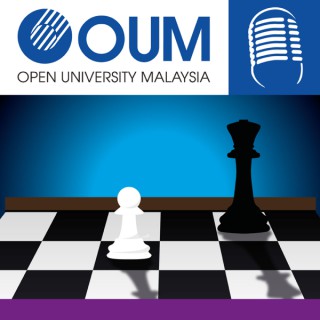
(Podcast) Strategic Management
Follow (Podcast) Strategic ManagementStrategic Management is one of the courses offered by the OUM Business School at Open University Malaysia (OUM). This is a compulsory course for all learners undergoing the Bachelor of Management and Bachelor of Business Administration programmes. It is a basic major course for learners pursuing a b…
- Oct 8, 2015 LATEST EPISODE
- infrequent NEW EPISODES
- 23m AVG DURATION
- 12 EPISODES
More podcasts from Open University Malaysia
Latest episodes from (Podcast) Strategic Management

Episode 6 differentiates between the nature and structure of industry. It also elaborates on PorterÊs five forces model, which is used for analysing industry situations.

Episode 4 outlines the concept of strategy formulation with emphasis on the key elements of the strategy formulation process. A comparison is made between organisational vision and mission. This leads to a discussion of organisational goals and objectives and the characteristics of high quality objectives.

Episode 8 describes the experience curve and its strategic implications. The three business portfolio matrices are differentiated and the steps to developing the Competitive Profile Matrix are discussed. The Strategic Position Action and Evaluation Matrix and its applications are also outlined.

Episode 9 outlines how corporate and business strategies are generated. The different types of corporate and business strategies are discussed along with the importance of these strategies to the business organisation.

Episode 10 discusses the issues affecting strategy implementation. The topic also illustrates the need for integrating objectives, policies and strategies in the organisation. The main features of different organisational structures are described. The topic also describes the relationship between strategy and culture and outlines the various organisational systems and functional processes.

Episode 2 distinguishes the key components of strategic management and elaborates on the strategic management model. The process of strategic formulation, implementation, evaluation and control are outlined. The interrelationships of the strategic management process are also discussed.

Episode 5 elaborates on the external environmental forces that have an impact of organisational performance. Learners are exposed to the opportunities and threats existing in the business environment. This is followed by a discussion of tools that can be used for conducting environmental analysis.

Episode 7 discusses the key internal organisational factors that affect the operations of organisations. Organisational strengths and weaknesses are examined and the tools for analysing the internal organisational situation of an organisation are described.

Episode 8 describes the experience curve and its strategic implications. The three business portfolio matrices are differentiated and the steps to developing the Competitive Profile Matrix are discussed. The Strategic Position Action and Evaluation Matrix and its applications are also outlined.

Episode 1 describes the evolution and development of strategic management. It identifies the major factors contributing to changes in the current business scenarios. The topic ends with a discussion on the benefits and pitfalls of strategic management.

Episode 1 describes the evolution and development of strategic management. It identifies the major factors contributing to changes in the current business scenarios. The topic ends with a discussion on the benefits and pitfalls of strategic management.

Episode 3 discusses the roles of corporate planners in strategic management. The roles played by the board of directors and the chief executive officer are explained. The roles played by middle management in the strategic management process are outlined in the last section of the topic.

















